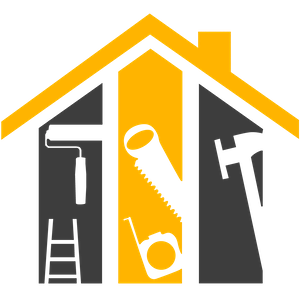- Innovative Toy Storage Solutions for Miami Residences
- Cost of Toy Storage Solutions in Miami
- Materials Needed for Innovative Toy Storage
- Estimating Material Quantities by Project Size
- Time Required for Different Storage Solutions
- Essential Tools for Installing Toy Storage
- Step-by-Step Installation Guide and Tips
Innovative Toy Storage Solutions for Miami Residences
Miami’s bustling lifestyle, coupled with its growing family-oriented communities, necessitates efficient and innovative toy storage solutions. As families strive to organize clutter and optimize living spaces, the demand for practical yet creative storage options increases. This article explores various aspects of implementing effective toy storage solutions, focusing on costs, materials, project size, installation time, tools required, and a step-by-step installation guide.
Cost of Toy Storage Solutions in Miami
The cost of implementing toy storage solutions in Miami can vary widely based on the materials chosen, the size of the project, and whether you decide to DIY or hire a professional. Here’s a breakdown:
| Storage Type | Average Cost (Materials) | Professional Installation | DIY Cost |
|---|---|---|---|
| Wall-mounted shelves | $150 – $300 | $400 – $600 | $200 – $350 |
| Custom-built units | $200 – $500 | $500 – $1000 | $250 – $550 |
| Storage benches | $100 – $400 | $300 – $700 | $150 – $450 |
| Modular cubes | $50 – $150 | $150 – $350 | $70 – $200 |
For Miami residents, the choice often depends on the budget and the specific needs of the space. Custom-built units, while more expensive, offer personalized solutions that can precisely fit the designated space and desired aesthetics.
Materials Needed for Innovative Toy Storage
Selecting the right materials is crucial for the durability and functionality of toy storage. Popular choices include:
- Wood: Versatile and sturdy, wood is a common choice for custom shelving and benches. Options range from affordable MDF to high-quality oak or maple.
- Metal: Metal brackets and frames are used for wall-mounted shelves, providing a sleek, modern look and robust support.
- Plastic: Plastic bins and modular components are lightweight, affordable, and available in various colors, making them ideal for children’s rooms.
- Fabric: Fabric bins are a soft, flexible option that can be used on shelves or inside larger storage units.
Each material has its benefits and limitations, and the choice often depends on the desired aesthetic, the environmental conditions of the room, and budget constraints.
Estimating Material Quantities by Project Size
To estimate the amount of materials needed, first clarify the project’s scope. Here’s a basic guideline for common storage sizes:
| Project Type | Wood (sq ft) | Metal (linear ft) | Plastic (units) | Fabric (units) |
|---|---|---|---|---|
| Small shelves | 10 – 20 | 5 – 10 | 2 – 4 | 3 – 5 |
| Medium unit | 30 – 50 | 10 – 20 | 5 – 7 | 6 – 10 |
| Large built-in | 60 – 100 | 20 – 30 | 8 – 12 | 10 – 15 |
This table can serve as a starting point, but custom projects might need adjustments based on design complexities and installation specifics.
If you have a question and need help from a specialist, you can write your request:
Time Required for Different Storage Solutions
The time required to install toy storage solutions can vary significantly. A simple set of wall-mounted shelves might take a few hours, whereas a full room of built-in units could require several days. Here’s an estimated timeline:
| Storage Type | DIY Installation Time | Professional Installation Time |
|---|---|---|
| Wall-mounted shelves | 2 – 4 hours | 1 – 2 hours |
| Custom-built units | 5 – 10 hours | 3 – 5 hours |
| Storage benches | 3 – 6 hours | 2 – 4 hours |
| Modular cubes | 1 – 2 hours | 1 hour |
These times can vary based on the complexity of the design and the installer’s experience.
Essential Tools for Installing Toy Storage
Whether opting for a DIY project or preparing for professional installation, having the right tools is essential. Commonly required tools include:
- Measuring tape: To ensure precise measurements and alignments.
- Drill: For making pilot holes and driving screws, especially in wooden and metal units.
- Saw: Necessary for cutting wood to the desired dimensions.
- Level: Critical for ensuring shelves and built-ins are perfectly horizontal.
- Screwdriver: For assembling modular units and securing hardware.
Having these tools at hand can significantly streamline the installation process.
Step-by-Step Installation Guide and Tips
Installing toy storage requires careful planning and execution. Here’s a simplified guide to help you through the process:
- Measurement and Planning: Measure the space and plan the layout of the storage units. Consider the flow of the room and accessibility for children.
- Material Preparation: Cut wood, metal, or prepare other materials based on the design specifications.
- Assembly: Assemble the units. This might involve constructing frames, attaching backing, and fitting shelves.
- Installation: Secure the units to the wall if necessary, ensuring they are level and firmly anchored.
Tips:
- Always anchor heavy units to the wall to prevent tipping.
- Use corner braces for added stability in large units.
- Opt for finishes that are easy to clean and maintain.
Implementing innovative toy storage solutions in Miami residences not only helps in decluttering and organizing spaces but also adds aesthetic value to the home environment. With the right planning and execution, these installations can be both functional and visually pleasing, providing a lasting solution to toy organization dilemmas.









